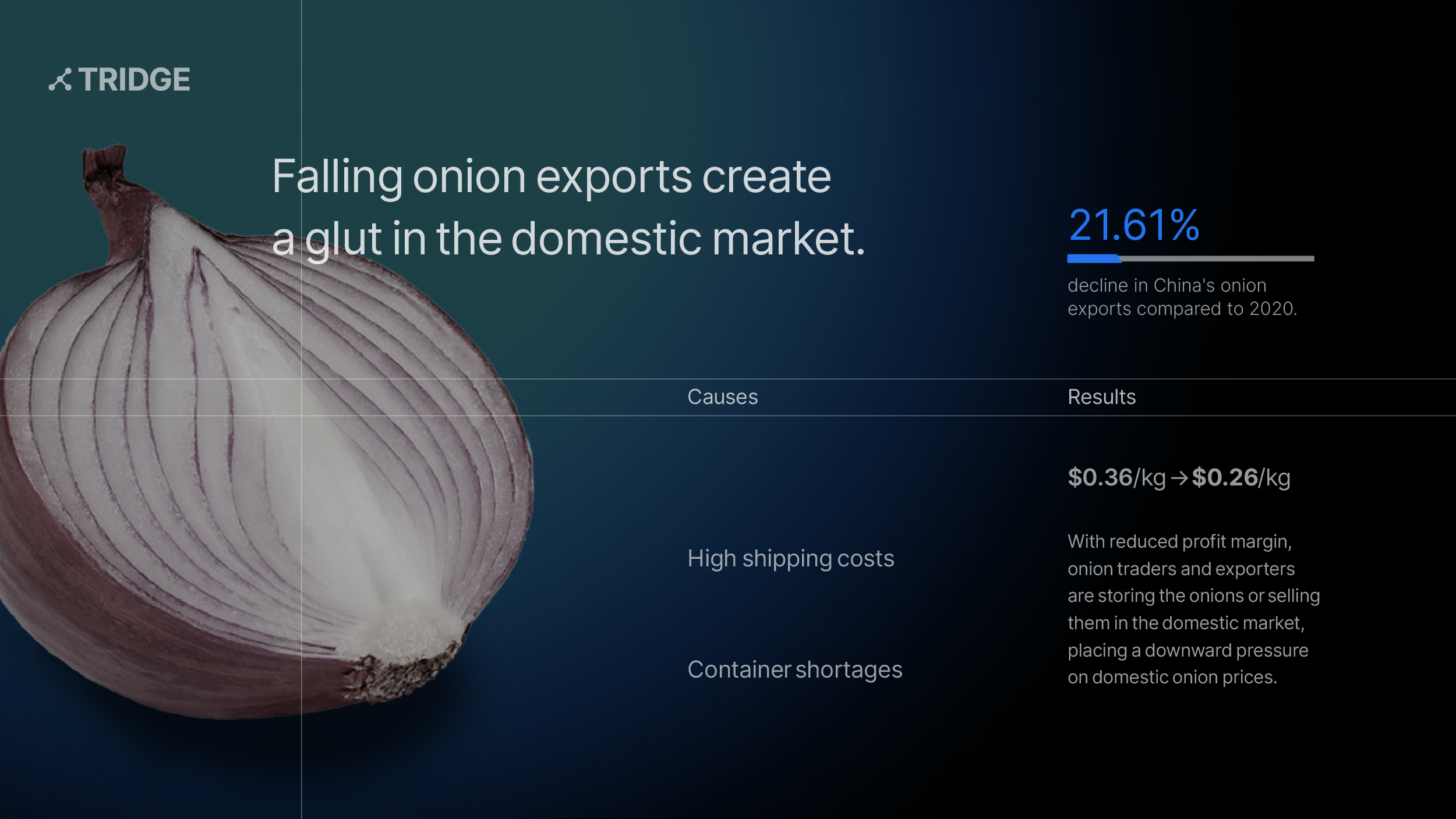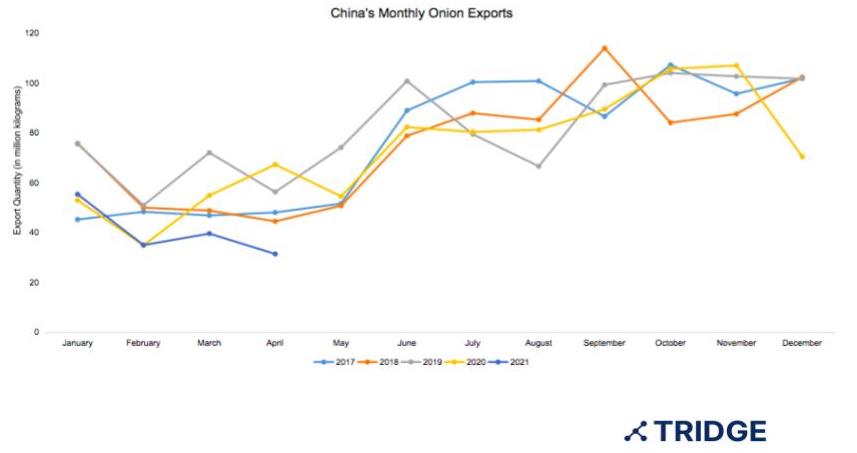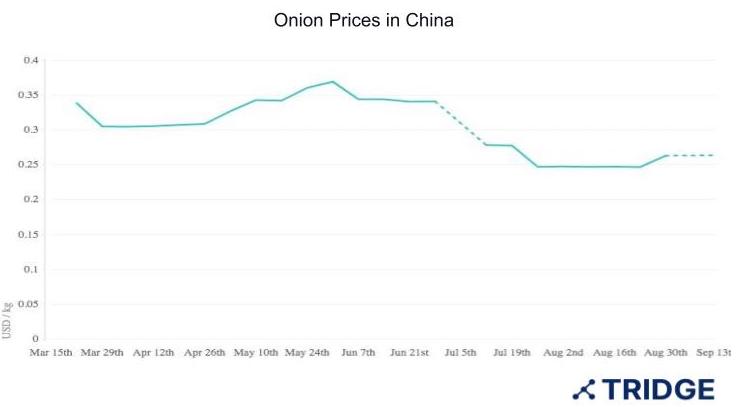Falling Onion Exports Create a Glut in the Domestic Market

China’s exported 881 thousand tons of onions worth USD 495 thousand in 2020, making it the second-largest exporter of onions in the world in terms of the value of exports. The onion export volume recorded a CAGR of 4.38% in the last 5 years and grew from 711 thousand tons in 2016 to 881 thousand tons. China’s main target for exporting onions is different markets in Vietnam, Japan, Hongkong, Malaysia, and Russia by sea. China’s onion exports start to pick up in June every year and continue to increase until November. After hitting the peak in November, the volume declines till the next season. In July 2021, China exported around 59,700 tons of fresh onions worth USD 41.5 million at an average export price of USD 0.70 per kg.
Compared to the previous month, the export volume shrunk by 3.89% and decreased by 23.98% than the same period in the previous season. The combined export volume in the first seven months of 2021 reached 325,153 tons, which is 21.61% less than in the same period of 2020. As per the Drewry Maritime Consultancy, prices of shipping containers in China have more than doubled in the past year and the container freight rates are up 351% year on year. As a result, the shipping prices shot up, reducing the volume of onions shipped out of countries. Furthermore, many ports in China were short on empty shipping containers and distribution was difficult in general.

Source: ITC Trade Map. HS Code: 070310
As the profit margin on onions was reduced, the onion traders have become reluctant to sell their produce in the international market. Consequently, onions that were supposed to be supplied in the international market started to pour into the domestic markets of China, pushing down the domestic prices of onions. As a result, the price of onions in the Gansu market began to fall in the middle of August and has been weak ever since. Onion harvesting in the Gansu region begins during the month of August and lasts till February or March of the following year. The region produces one of the largest volumes of onions in China, and the onions enter the market earlier than onions from other production areas. According to the dynamic price data collected by Tridge, onion prices in China have fallen down from USD 0.36 to USD 0.26 in the last six months, which is a decrease of about 24% across China.

Source: Tridge. Price Charts.
The prices of red onions in the Chinese domestic market are currently increasing but at a very slow rate while the price of yellow onions remains low. Later in the season, the price is expected to fall even further during the harvest season as more onions will be pouring to the domestic market. Onion farmers and traders are waiting to see what happens in the global market and the demand-supply of shipping containers. With limited storage capacity and weather conditions, onions are likely to spoil in the storage if kept for a long period of time. In the coming months, the export volumes might pick up, but the extent of it depends solely on the logistic situation and prices across South East Asia.
Source
- China Macro Economy. “China’s shipping-container costs hit all-time highs, and the shortage will further push up prices in coming months.”
- Fresh Plaza. “Chinese onion exports in the first 7 months of 2021 declined by 21.61% compared to the same period last year.”
- ITC Trade Map. HS Code: 070310
- Tridge. Price Charts.





